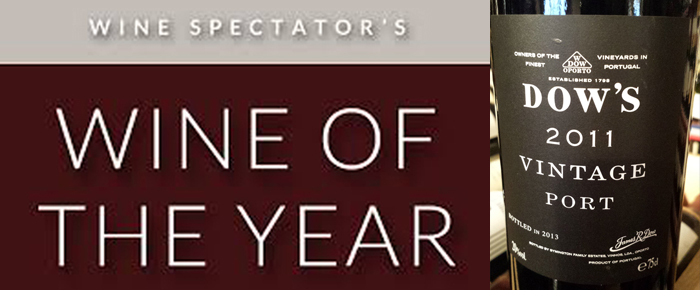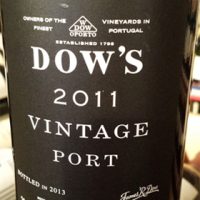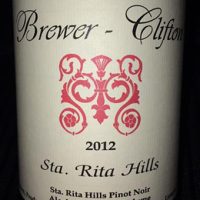
By Rick Riozza
It surely is the longest day. But it’s best to make a game of it: trying to commandeer as many top rated world class wine and then take each bottle down to Chinatown—to eat, drink, take notes, and think (and of course, the thinking part also includes drinking again).
The good news is that we “winebusters” don’t really have to assemble a rating list; such as, “The latest & greatest best wines in the world at this moment!” Actually, I’m very comfortable with God having absolute knowledge about that stuff. What we wine analysts often do, is simply reach over for the Wine Spectator magazine’s end-of-the-year edition that lists “100 of the most exciting wines of the past year”.
Having to choose 100 wines from some 18,000 releases, is what Spectator does best since 1988. And generally, I prefer their wine ratings over all others. They do well to select all wines across the board, from expensive to extremely reasonable, and with the best criteria being: 1. the wine is excellent (90+ scores), 2. a good value overall, 3. exciting (I use the term “sexy” for the same point in my reviews), and 4. that there’s enough wine produced for many to enjoy. The inevitable problem is that after the release of the list, many wines quickly sell out and/or increase in price.
Lately, the “number one wine” – also referred to as the “wine of the year”, has been one of the usual suspects such as a Bordeaux, Burgundy, or California Cab. This year, it’s a wine from the past: Vintage Port—from Dow 2011.
Vintage Port was somewhat of a craze in the late 80s when a new wave of wine enthusiasts in America was up and about learning and experiencing the great wines around the world. And there was so much older Vintage Port around, from wonderful years as 1945, ‘63, ‘70, and ‘77, and it sold so cheap. I remember around 1987, purchasing a case of ‘63 Quarles Harris Vintage Port at an auction house for a hundred bucks. It was stellar from a stellar vintage. In England it would have sold for a lot more; in San Francisco, no one had ever heard of it—so I made out!
Yes—I know, Vintage Port was the stuff stuffy old men drank in their private clubs. And when one passed the bottle around the table at dinner, it traditionally had to move to the right—or was it the left? A fun tradition is the purchasing of the latest bottling of Vintage Port at the birth of a child and storing it for them so that it may be enjoyed with they turn 21 years of age. Now that a Vintage Port has made it back to numero uno, we should indeed consider it and enjoy a few glasses.
All Port starts fermentation like any red wine. The difference is that Port’s fermentation is stopped by the addition of neutral grape brandy after only a portion of the grapes’ sugar has been converted to alcohol. The result is a fortified wine that contains about 20% alcohol, yet retains some sweetness.
It’s always referred to as a “dessert wine”, but these days with the explosion of food flavor experiences, this “sweet wine” can easily be ordered up at the wine bar, and, certainly appear before, during, and after dinner. Vintage Port always continues its sweet flavor profile, but modernly, it’s not overly sweet, with winemakers producing powerful and muscular fruity wines along with firm tannins.
The winning tasting note for the 2011 Dow, which sells for around $82, states: “Powerful, refined and luscious, with a surplus of dark plum, kirsch and cassis flavors that are unctuous and long. Shows plenty of grip, presenting a long, full finish, filled with Asian spice and raspberry tart accents. Rich and chocolaty. One for the ages. Best from 2030 through 2060.” It sells for around $85.
I have some all-time favorites in this year’s Top 10: The 2012 Clos Des Papes, Châteauneuf-du-Pape, is a mouthful as to both its pronunciation and abundant flavor profile. Actually, it’s one of the easiest French words to speak; like the French—just say it all at once: “Sha-toe-nuf-doo-pop!”
Meaning “the Newcastle of the Pope”—that’s when the Pope in Rome took off to the south of France to run the papacy, and, to make some good wine! Planting the best of the area such as Grenach, Mourvèdre, Cinsault, the area can actually include 13 varieties into the mix. As it ages, it’s one of the most delicious wines on earth.
The 2011 Bordeaux from Chateau Léoville Las Cases, is always one of the best Bordeaux and one of the cheapest. Prestige aside, why pay $1500 a bottle when you can enjoy classic Bordeaux from Léoville at $175?
And a wonderful shout-out to our friends Greg Brewer and Steve Clifton for their 2012 Brewer-Clifton Pinot Noir Sta. Rita Hills. My son Paolo was one of their first wine club members back at the Wine Ghetto in Santa Barbara. Their wine, with notes of snappy wild berry, pomegranate, lavender, black tea, mint, forest floor, licorice and black & dried cherries, dried wild mushroom and baker’s cocoa, is a great example that achieves Santa Rita Hills as one of the world’s best regions for producing Pinot Noir. In the Top 10! Congrats and well-deserved!
Cheers to all!
.















































